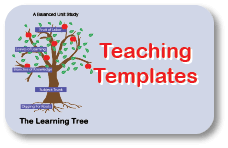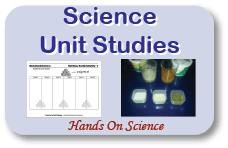Carbohydrate Worksheet For Kids
Carbohydrate worksheet teaches the function and structure of carbs to kids.
Free Download Below
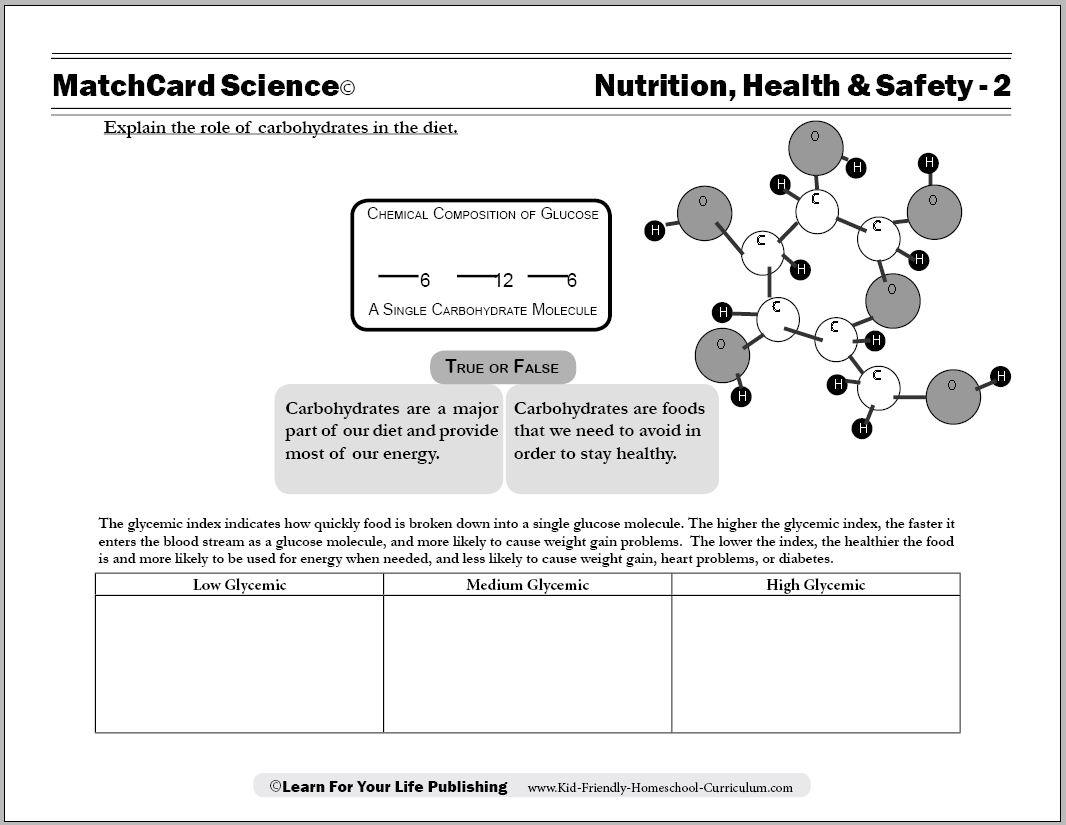
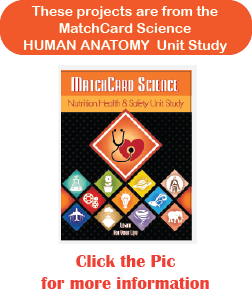
MatchCard Science Nutrition Facts Worksheet
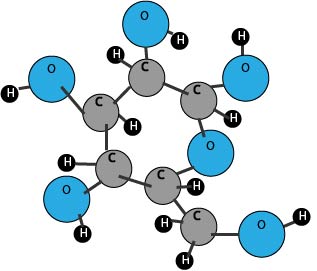
MatchCard: Download below.
Students identify the molecular structure of carbohdyrates, explain their purpose in the diet, and identify high and low glycemic foods. Information Pieces are placed in the correct place on the worksheet.
Print the Carbohydrate MatchCard


Click image to go to download.
This is MatchCard #2 of the Nutrition, Health, and Safety Unit Study. Find more information on MatchCard Science below.
What Is a Carbohydrate?
A carbohydrate is a compound with the molecular formula C6H12O6 that provides energy (calories) in the diet.

What Does Carbohydrate Mean?
Carbohydrates are also called sugars or starch. The name "carbohydrate" comes from its molecular structure: carbon and water.What's In a Name?
- Have your student think of other words where "hydra" or "hydro" is the prefix for water
- Compare the molecular structures of water and carbohydrate:
- H20
- C6H12O6.
Why Do We Need Carbohydrates
Carbohydrates are the major source of energy for our cells.Let's compare it to gasoline to a car. Just like cars need a “fill up” after using all the gas, our cells need a regular supply of glucose. Our body turns all carbohydrates into glucose molecules eventually. (But not all carbs are created equal - as you will explain later.)
You can’t put too much gas into a car; but you can eat too many carbohydrates. Guess what the liver does with the extra glucose your cells don’t need? psst. Converts it to fat.
What Foods Contain Carbohydrates?
The students who did MatchCard #1 for this Nutrition Unit will have no trouble listing foods high in carbohydrates from the grain food group:- Grains
- Cereal
- Breads
- Pasta
- Rice
The Iodine Carb Checker Activity
Make your own carb checker out of iodine. Mix about one tablespoon iodine with one tablespoon of water in a small container. Have a variety of carbs and non-carb foods to test:- Cracker
- Egg (any form)
- Bread
- Milk
- Pasta
- Meat
- Cereal
- Potato
Glycemic Index
Simple sugars are already packaged as simple glucose molecules. Complex carbohydrates are chains of the molecules (different sugars have slightly different arrangements, but the same number of carbon, hydrogen, oxygen atoms.)Eat a simple sugar, like candy or cookies, and all those glucose molecules spike your blood sugar, causing your body to release insulin transport the glucose into the cellls. Then your blood sugar is low, you get hungry, and want more - sugar! Even if your cells don’t need the extra energy. You know what happens then!
What Is a Complex Carbohydrate?
Complex carbohydrates consist of chains of glucose molecules. The enzymes in the digestive system break them apart little by little. Over several hours they simple molecules move into your blood stream a little at a time. No dramatic peaks and valleys in blood glucose. Complex carbohydates have a low glycemic index and should be consumed more often than simple sugars.
More Carbohydrate Learning Activities
Grocery Flyer Glycemic Poster
Use the weekly grocery flyer and cut out different forms of carbohydrates. Glue them on a poster showing low glycemic, medium glycemic, and high glycemic foods.
When your child eats high glycemic foods, ask him or her to choose a low glycemic food to eat as well. Instead of denying the tasty foods, balance it with the healthy carbs.
Different Carbohydrate Molecues Chart
Assign an older student to make a chart showing the different types of carbohydrate molecules (glucose, sucrose, galactose, lactose, etc.)
They can create a diagram to show how they are broken into glucose molecules and circulated in the blood stream.
Fiber: Get the Low-Down, Poop-Scoop on Fiber
So what’s with fiber anyway? Fiber is a plant carbohydrate with a molecular arrangement that prevents it from being digested - or absorbed - through the intestinal wall into the blood stream. It stays in the intestines. It provides bulk to the waste, prevents diarrhea and constipation both by absorbing water to give bulk and maintaining moisture. It keeps the bowels working by giving a mass that can be moved readily along, and prevents preservatives and toxins from staying inside your body which happens with a low-fiber diet.
Give your kids a piece of celery and a piece of chocolate. Chew completely and notice how it feels before you swallow it. Yeah, the chocolate tasted better, but which is going to help your intestines work better? Fiber in the celery will move things along. The chocolate? It will sit there and harden unless some other fiber comes along and helps it on its way.
MatchCard Science
How To Use MatchCards

Download the FREE MatchCard Science Instructor's Guide and see how MatchCards can make building their science knowledge base fun.
Nutrition, Health, and Safety Unit Study
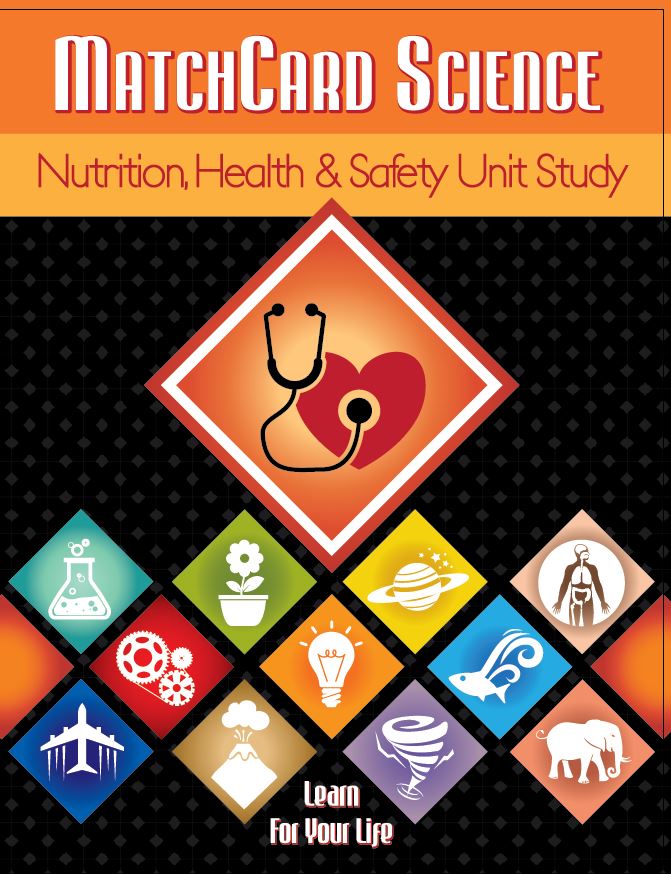
See more about the Nutrition, Health, and Safety Unit Study.
12 Science Unit Studies

Chemistry is only one of twelve complete unit studies for kids in 3rd to 8th grade.
Comprehensive objectives, hands-on projects, suggested science fair experiments, and the fun game-like MatchCards keep them interested in learning science. See all twelve MatchCard Science Unit Studies.
About Our Site
Hands-On Learning




